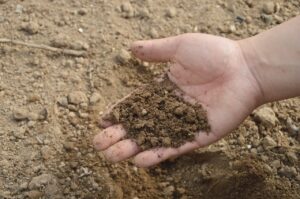Vine care is a seasonal activity that requires patience, know-how and observation. Whether you’re a professional winegrower or a passionate amateur growing a few vines in your garden, proper care is essential to ensure the health of your plants and an abundant production of quality grapes.
The vine, a climbing vine that can live for several decades, requires specific care throughout the year. From winter pruning to spring frost protection and preventive treatments against disease, every intervention contributes to the success of your crop.
Vine maintenance schedule
Vineyard maintenance is organized according to a precise schedule that follows the plant’s vegetative cycle. Here are the main operations to be planned each season:
Winter

During this season, we also recommend adding compost at the foot of the vines to enrich the soil. This simple gesture will nourish the vines for the coming season.
Spring care

In May and June, it’s important to carry out disbudding, which consists of removing unnecessary shoots over 15 cm long. This operation concentrates the plant’s energy on productive shoots.
Summer
Summer is devoted to health monitoring and foliage management. Pay particular attention to signs of powdery mildew and downy mildew, especially in wet weather.
In June, after flowering, you can thin out the bunches to encourage better ripening of the remaining grapes. This technique involves removing some of the grapes in the center of the bunch.
Autumn work
Autumn is of course harvest season, but it’s also the time to prepare the vines for the cold weather. After the harvest, it’s advisable to clean up the vines and remove any diseased leaves that have fallen to the ground.
It’s also the ideal time to plant new vines, so that they have time to root before the winter cold sets in.
Pruning techniques for optimum maintenance
This is undoubtedly the most important operation in vine maintenance. It largely determines the vine’s production and longevity.
Winter training pruning
It should be carried out as soon as it is planted, and then every year in the coldest season. For a young plant, keep only the first two buds on the main stem and prune just above them. Of the two shoots that grow, keep the most vigorous and stake it.
Over the years, winter pruning enables us to shape the vine’s framework according to the desired form: vertical, horizontal or goblet cordon.
Maintenance and fruiting pruning
In February-March (late February in the South, early March north of the Loire), prune the side shoots by cutting above the 2nd or 3rd bud.
After several years of fruiting, the vine needs to be rejuvenated. In this case, cut off the old wood above a young shoot that has emerged naturally, or alternatively, prune severely at the base of an old shoot to encourage the appearance of new shoots.
Green pruning and chiselling
It is carried out during the vegetation period, mainly in May-June. It consists in eliminating excess shoots and pinching off the ends of the branches to encourage fruit ripening.
Chiselling is a more delicate operation which consists in thinning out the bunches by removing certain berries, particularly those in the center which could encourage the appearance of cryptogamic diseases.
Soil maintenance and fertilization

Soil preparation and improvement
Before planting, it’s important to analyze and prepare the soil. Vines adapt to different types of soil, but prefer well-drained soils. If your soil is too clayey, incorporating sand can improve drainage.
Adding well-decomposed compost before planting will enrich the soil with organic matter and essential nutrients. However, avoid incorporating fertilizer directly in contact with the roots during planting, as this could burn them.
Regular fertilization
The annual application of compost or a specific vine fertilizer in early spring will promote balanced growth. Applications should be moderate, as excess nitrogen can make vines more susceptible to disease and reduce fruit quality.
Maintenance by hoeing and mulching
Hoeing consists in loosening the soil superficially to aerate it and limit water evaporation. As the saying goes: “One good hoeing is worth two waterings. This practice is particularly beneficial in dry weather.
Mulching the soil at the foot of the vines conserves moisture, limits weeds and gradually adds organic matter. Natural mulches such as wheat straw or RCW are particularly suitable.
Protection against disease and parasites
Vines can be affected by various diseases and parasites that require constant vigilance.
Preventing and treating mildew and powdery mildew
These two fungal diseases are the most common and can cause considerable damage. Downy mildew is characterized by oily spots on the leaves and a white fuzz on the underside, while powdery mildew is characterized by a white-gray felting on the leaves.
Preventive treatment with Bordeaux mixture against downy mildew and sulfur against powdery mildew is recommended, particularly during humid and hot periods which are conducive to their development.
Insect pest control
The main insect pests are cochylis and eudemis (grape moths), whose larvae attack grape bunches. Pheromone traps can be installed to capture male moths and limit reproduction.
For an ecological approach, encourage biodiversity around your vineyard to attract natural predators such as insectivorous birds and auxiliary insects.
Frost protection: a major challenge for vineyard maintenance
Spring frost is one of the most serious threats to winegrowers. Buds and young shoots, particularly sensitive to sub-zero temperatures, can be destroyed in a matter of hours.
Understanding the different types of gel
There are two main types of frost that can affect vines:
-
Radiative frost: the most common, it occurs on clear, windless nights, when the ground loses heat through radiation.
-
Advective frost: caused by the arrival of a cold air mass accompanied by wind.
Traditional protection solutions
Several methods have been developed over the years to protect vines from frost:
|
Method |
Principle |
Benefits |
Disadvantages |
|---|---|---|---|
|
Antifreeze plugs |
Direct heating |
Easy to install |
Costly, polluting, labor-intensive |
|
Air circulation |
Effective on large surfaces |
Fixed installation, high power consumption |
|
|
Heat release when water freezes |
Highly effective |
High water consumption, risks |
|
|
Thermal blankets |
Insulation |
Suitable for small surfaces |
Time-consuming set-up |
Technological innovation: Ventigel, an effective frost protection solution
Faced with the limitations of traditional methods, innovations such as Ventigel provide a more appropriate response to today’s challenges. This mobile ventilation system works in two complementary ways:
-
Prevention: by ventilating early enough with a powerful jet of air, it dries out the plots and prevents condensation forming on the plants.
-
Action: its concentric jet of air travelling at over 35 m/s (126 km/h) redistributes rising hot air during a radiant frost, effectively covering an area of over 3 hectares.
In the event of very low temperatures, Ventigel’s integrated 110 kW oil-fired heating booster injects additional calories into the air stream.
With its moderate power consumption(12 kWh) and silent operation (between 57 and 65 dB at 100m depending on model), Ventigel represents an economical and environmentally-friendly alternative to traditional methods, while offering effective protection against frost damage.
Specific care for different types of vines
Depending on the type of vine you grow and how you use it, there are a number of specific factors to take into account.
The table grape vine
These varieties, such as ‘Chasselas Doré de Fontainebleau’ or ‘Muscat de Hambourg’, require special attention.
Thinning is essential to obtain beautiful, well-developed fruit.
For these vines, bunches can be bagged with kraft paper when the berries begin to swell. This technique protects the fruit from disease, insects and birds, while promoting even ripening.
Ornamental climbing vines
Maintaining climbing vines such as Virginia creeper (Parthenocissus) is mainly a matter of controlling their sometimes invasive growth. Annual pruning at the end of winter helps to keep these plants in their rightful place.
For the first few years, concentrate on the main shoot, pruning it as soon as it reaches the desired height (generally 2 to 2.5m). After 3 years, leave several secondary branches to gradually cover your support.
Frequently asked questions about vine care
When and how to prune the vine?
The main pruning is carried out during the coldest season, between December and March, when the vine is at rest. For table-grape vines, pruning is generally short, leaving 2 to 3 eyes on the previous year’s shoots.
How long does it take to grow grapes on a vine?
In general, you need to wait 3 years after planting to obtain your first significant harvest. Some early varieties can produce a few bunches as early as the second year, but it is preferable to remove them to encourage the development of the plant.
How long does a vine last?
A well-maintained vine can live for several decades, and some hundred-year-old vines still exist in old vineyards. In home-growing, a vine is considered productive for 30 to 50 years.
When and how to care for your vines in spring?
In spring, watch out for frost and protect your plants if necessary. This is also the time to start preventive treatments against fungal diseases.

